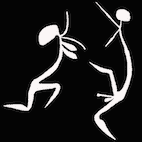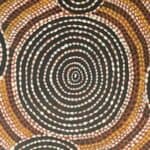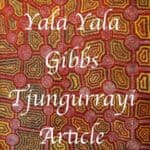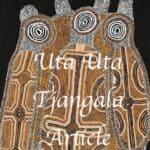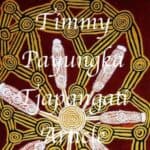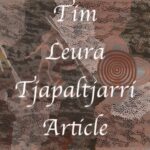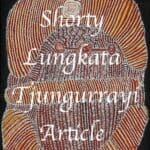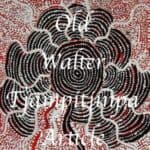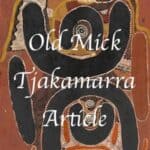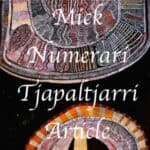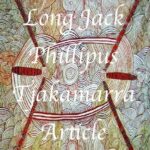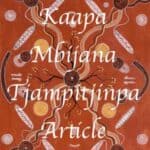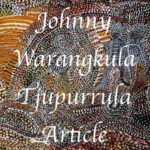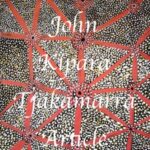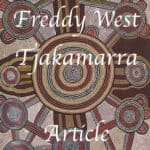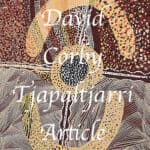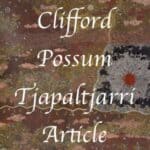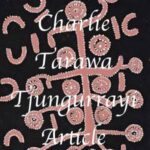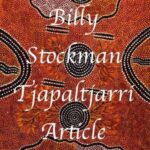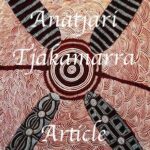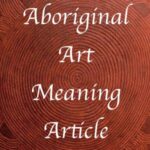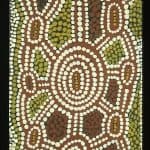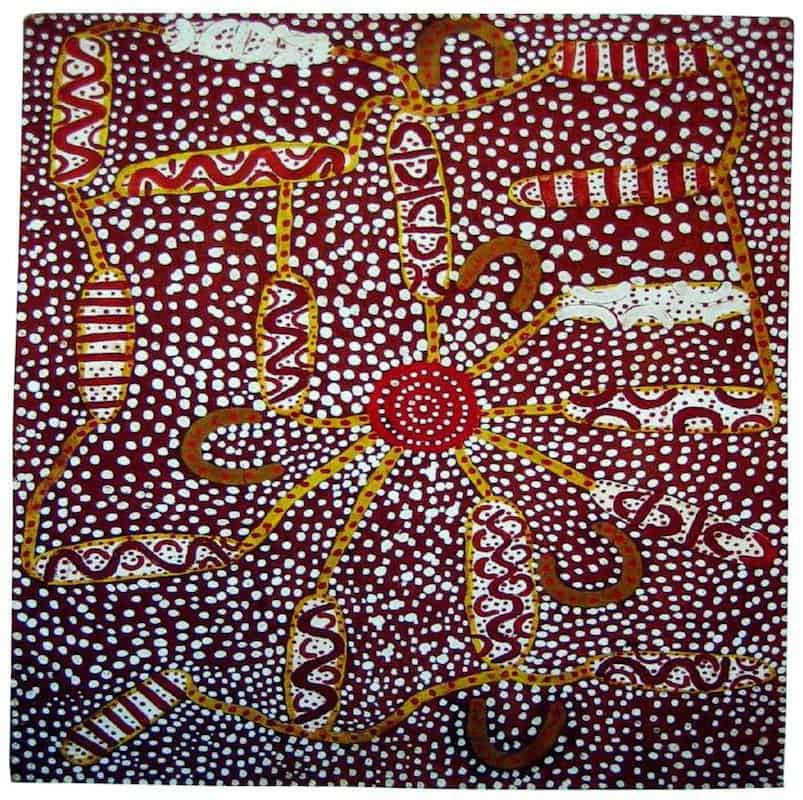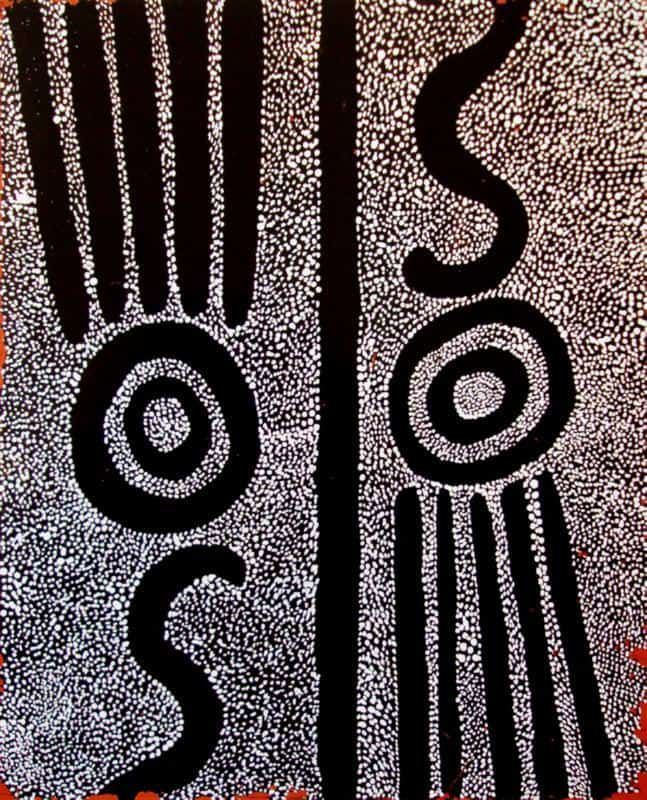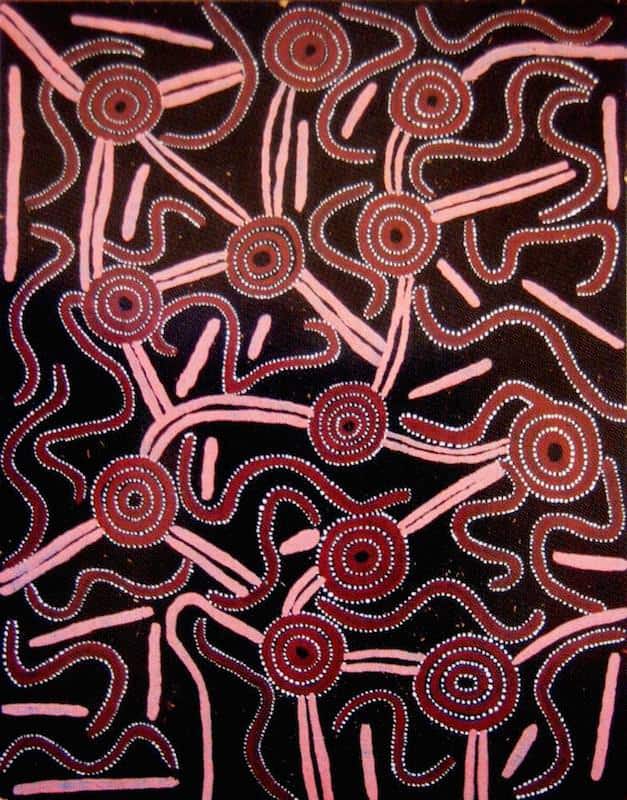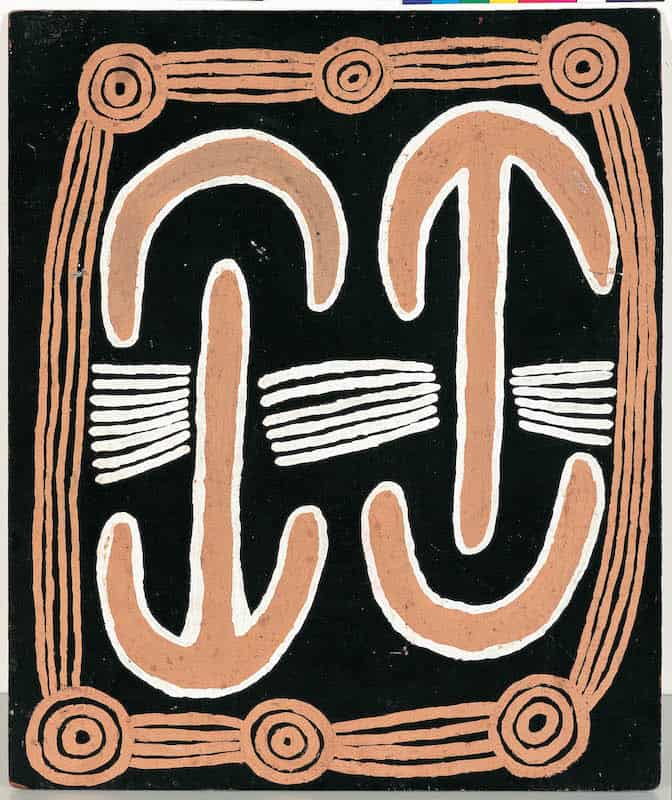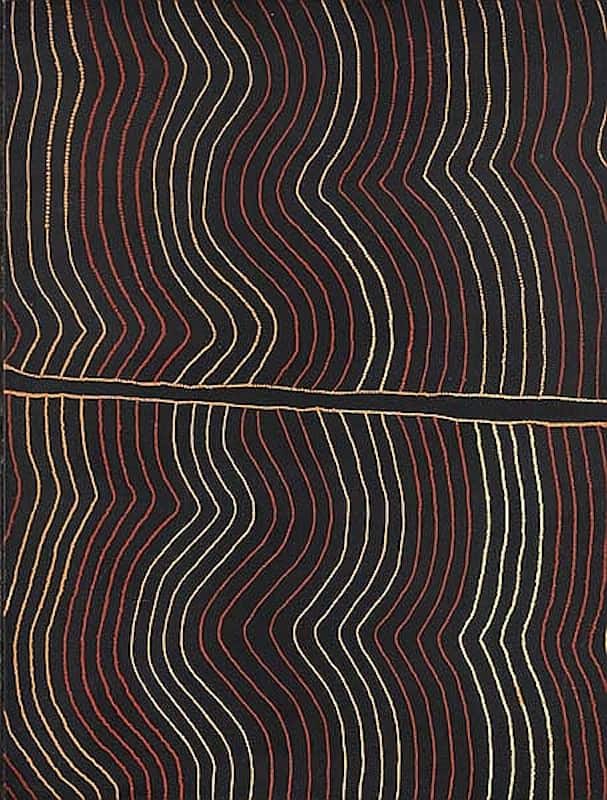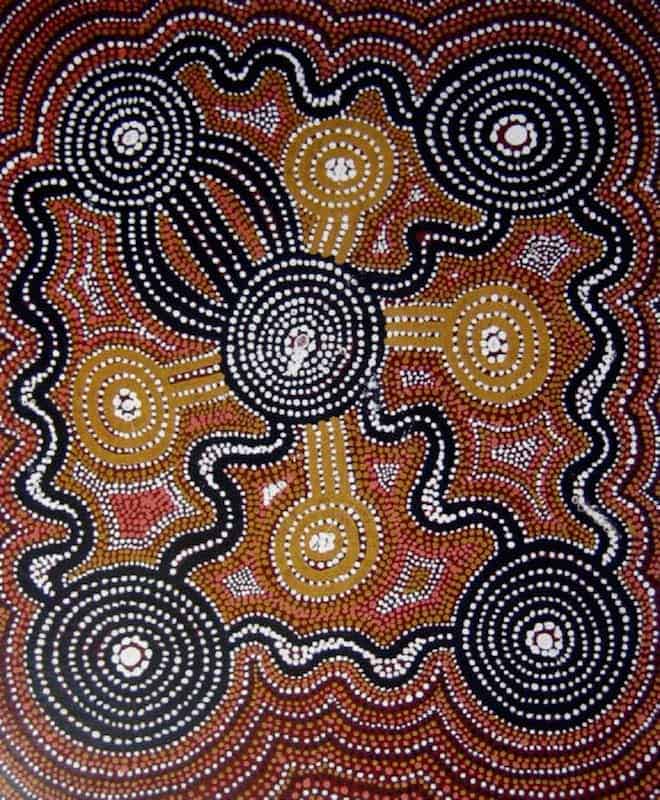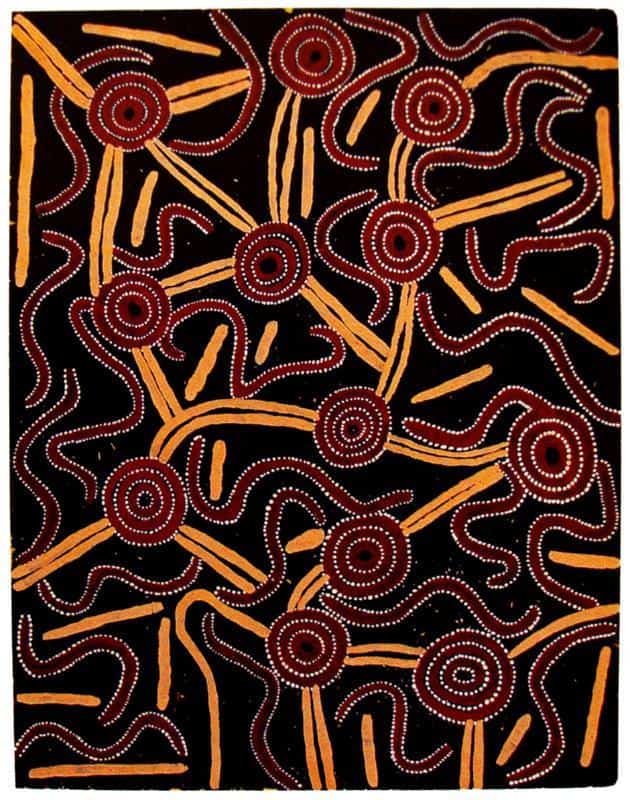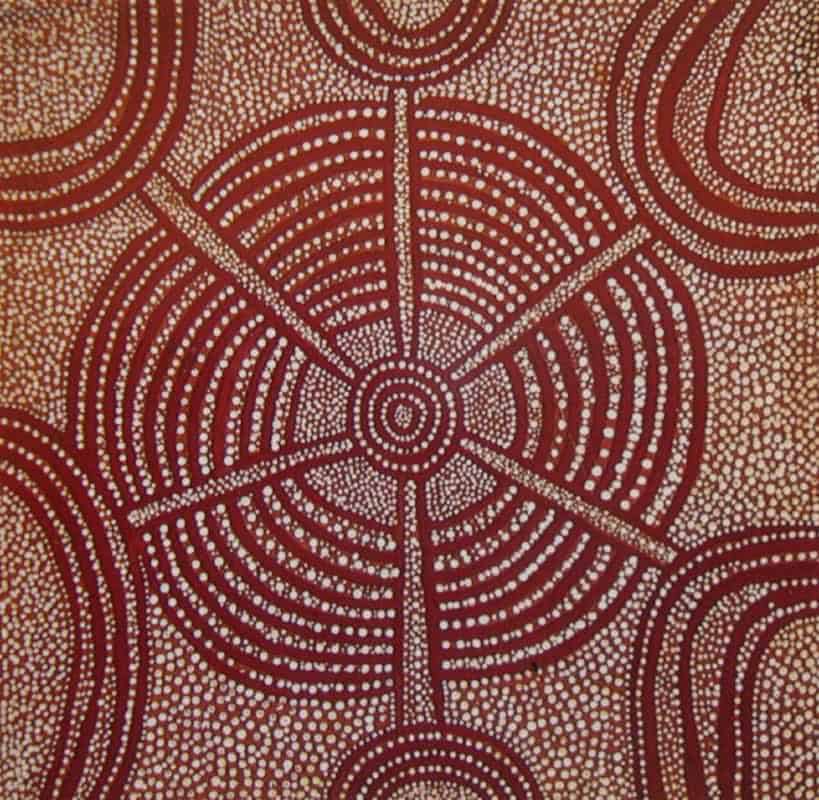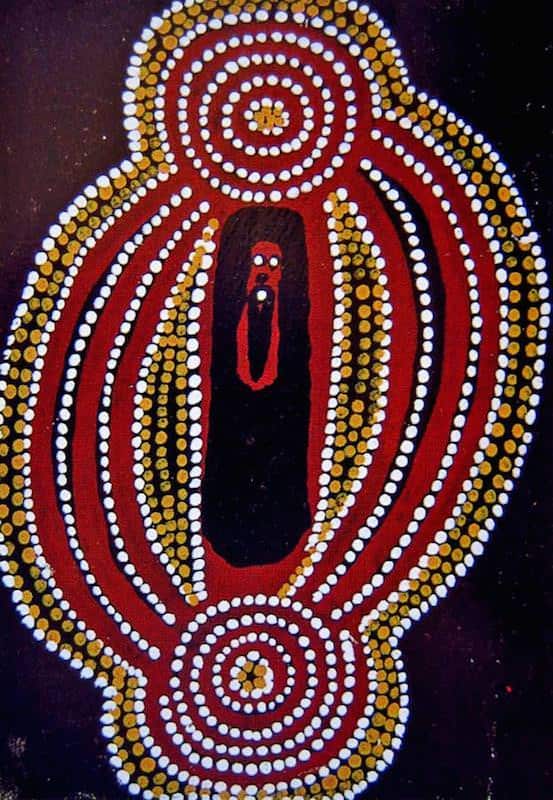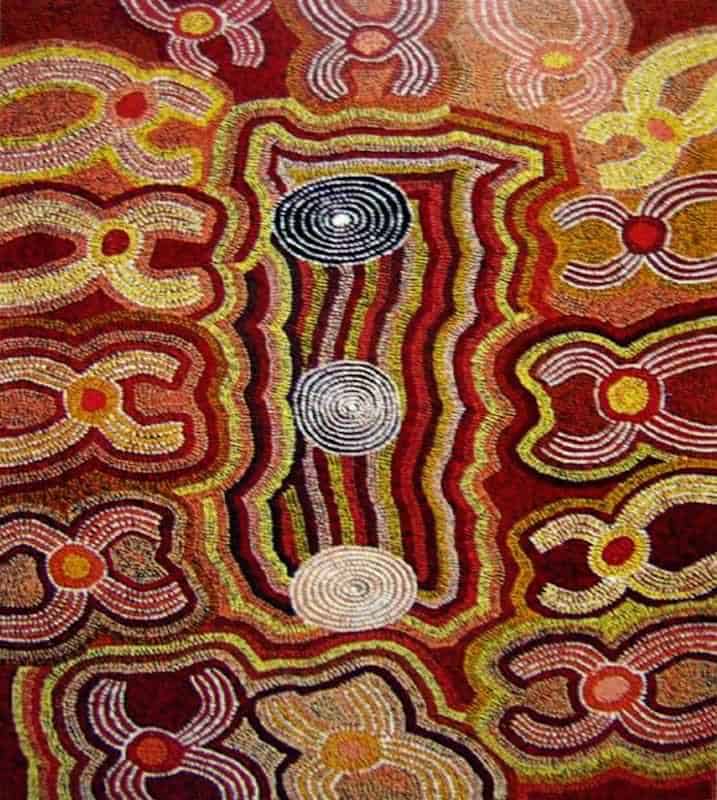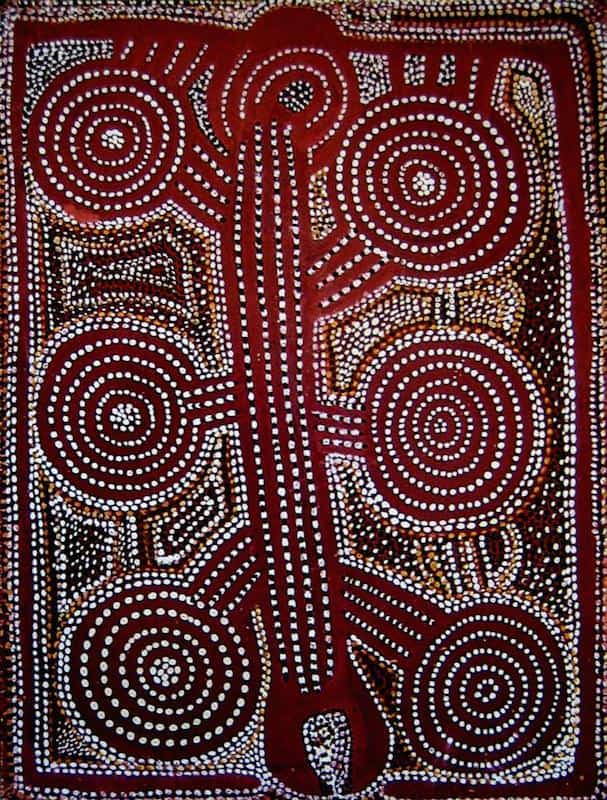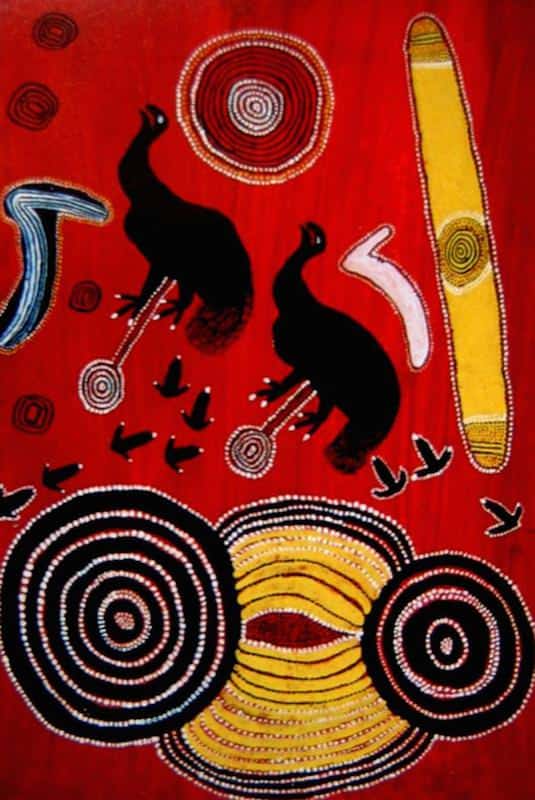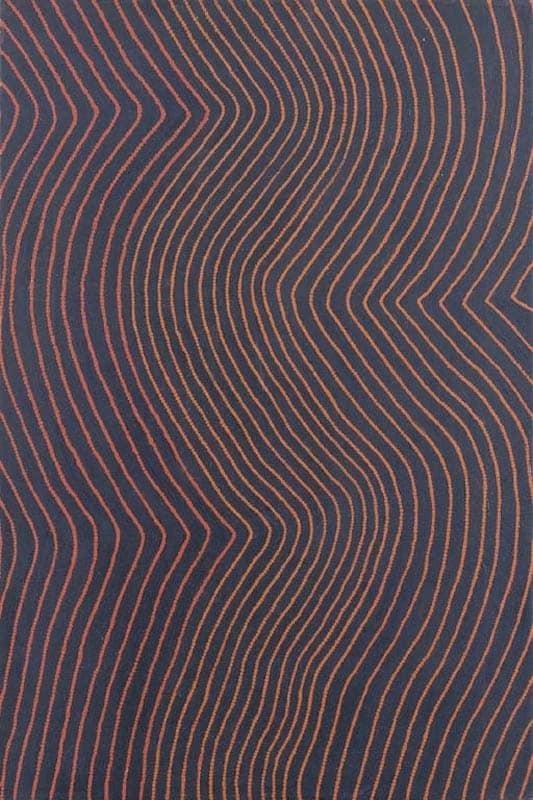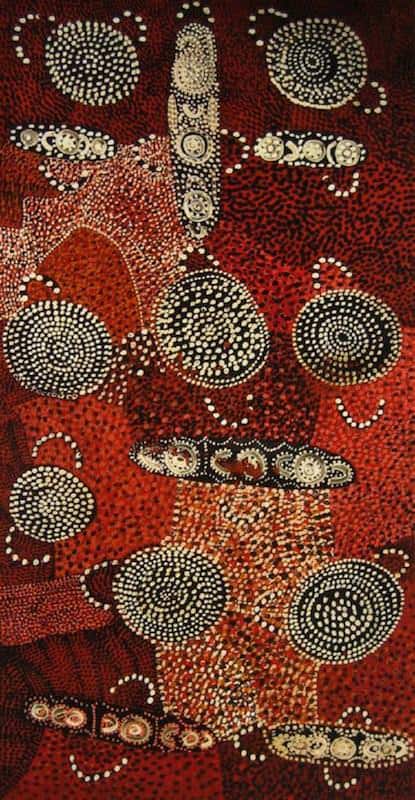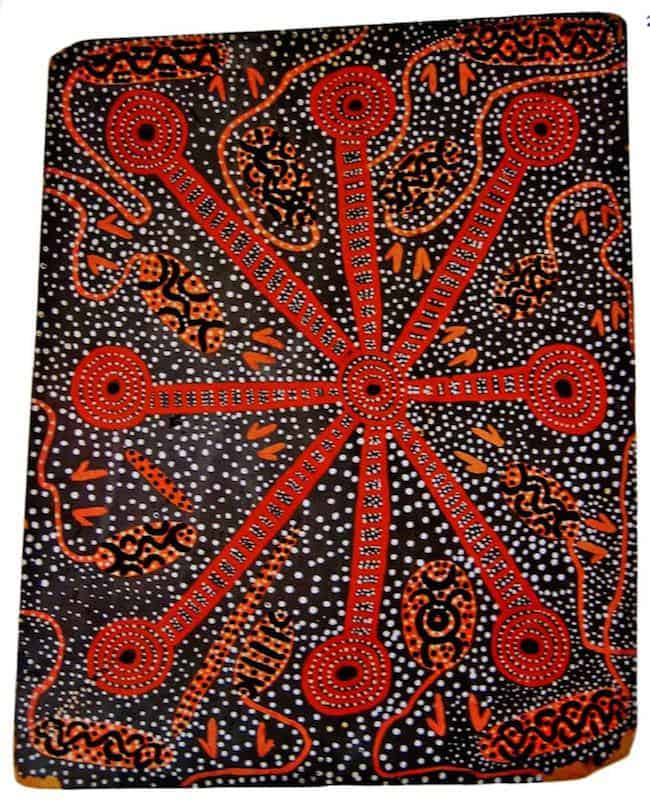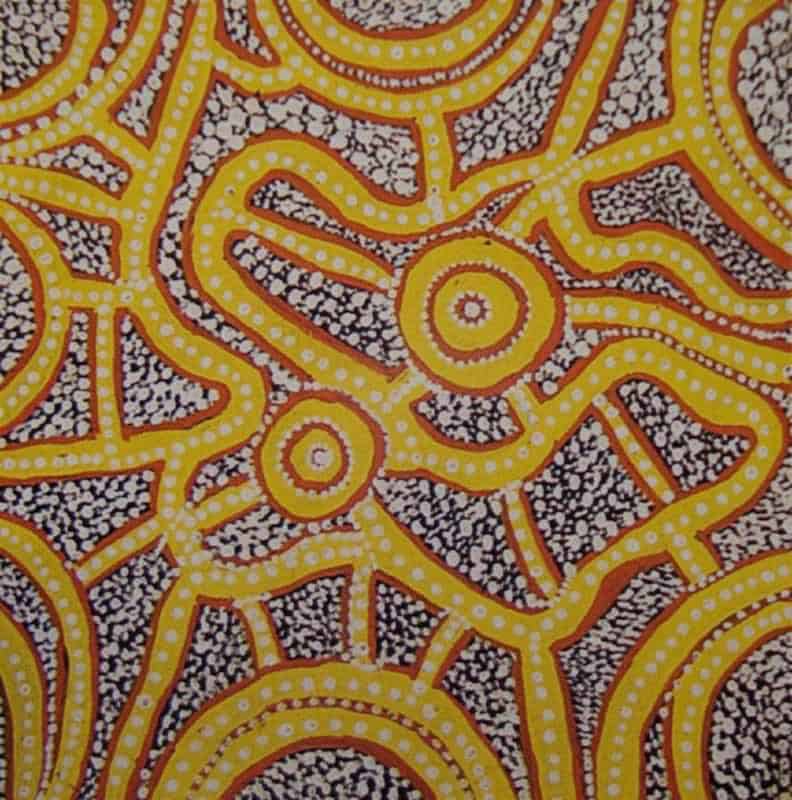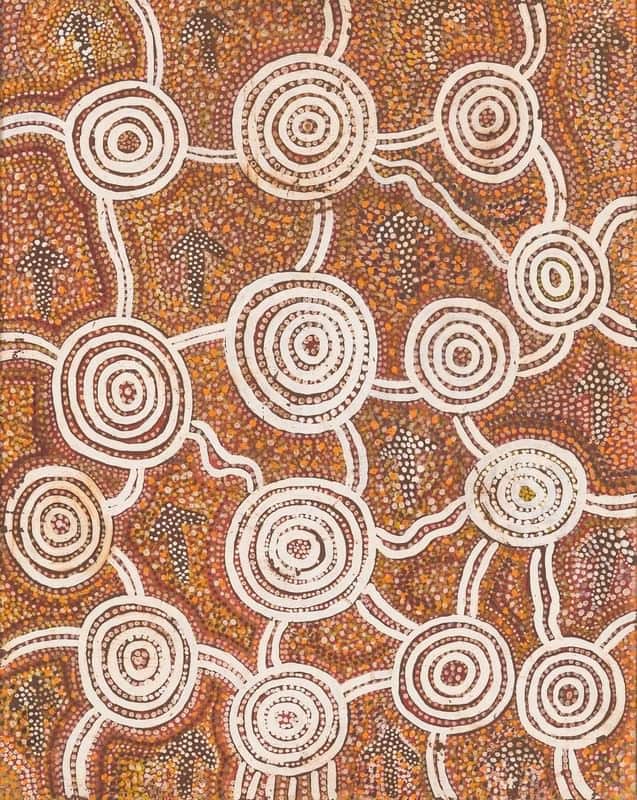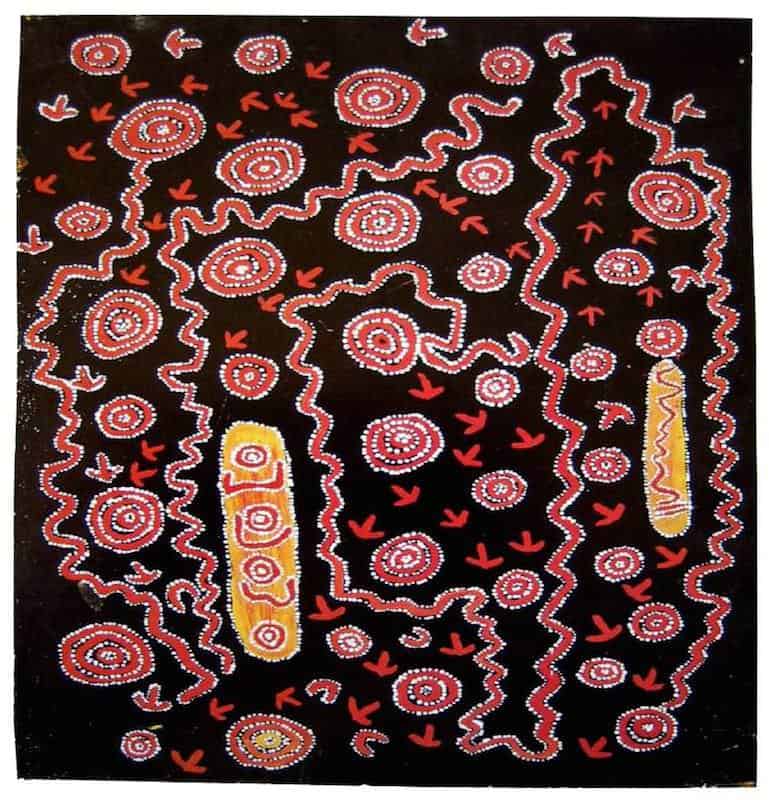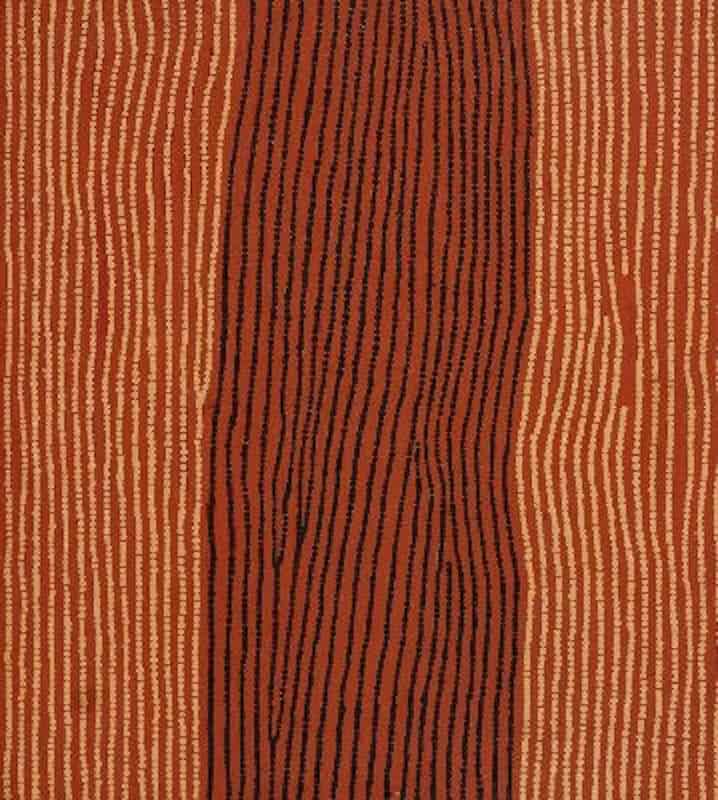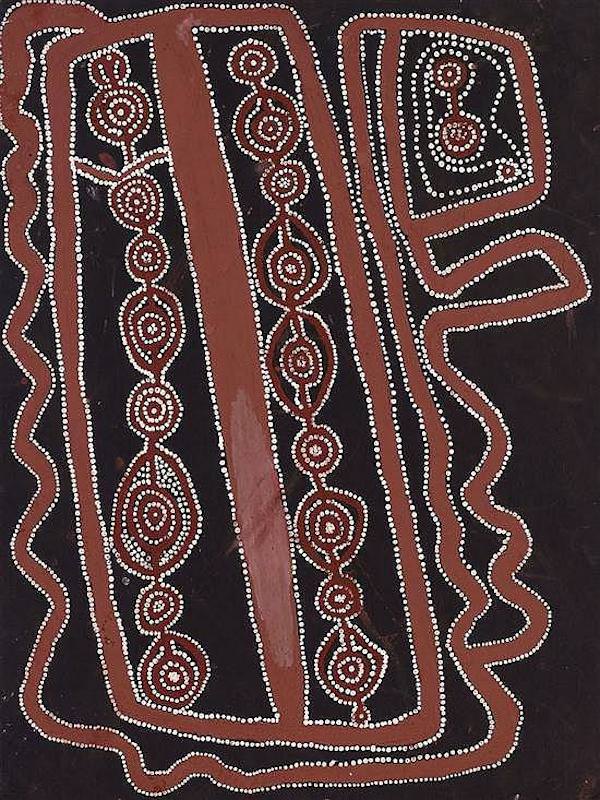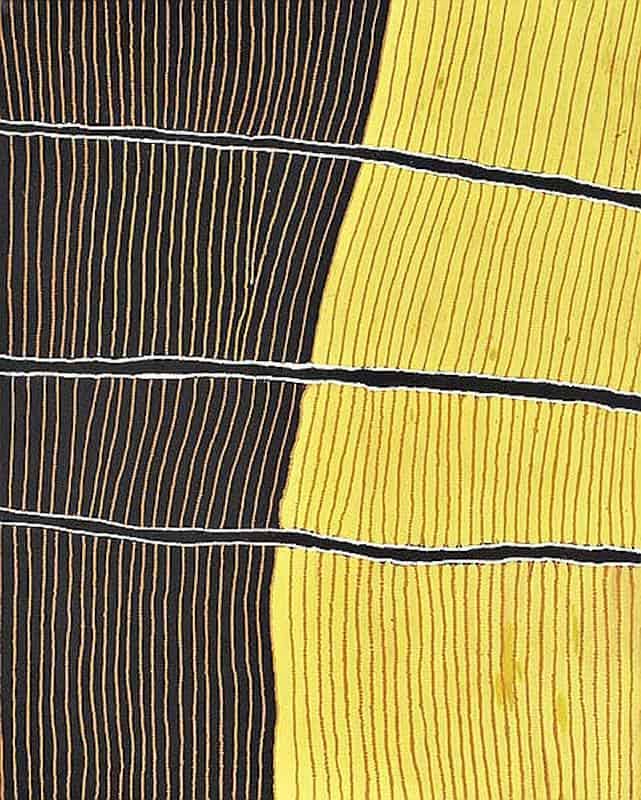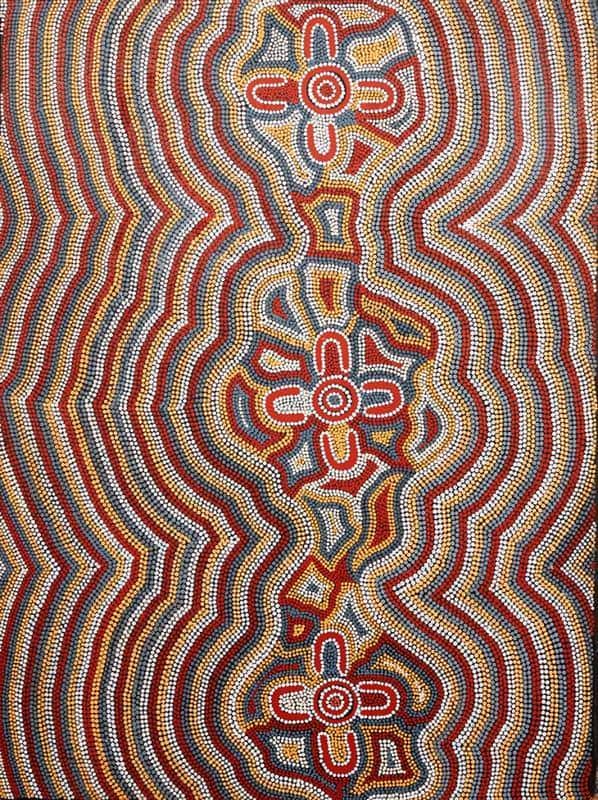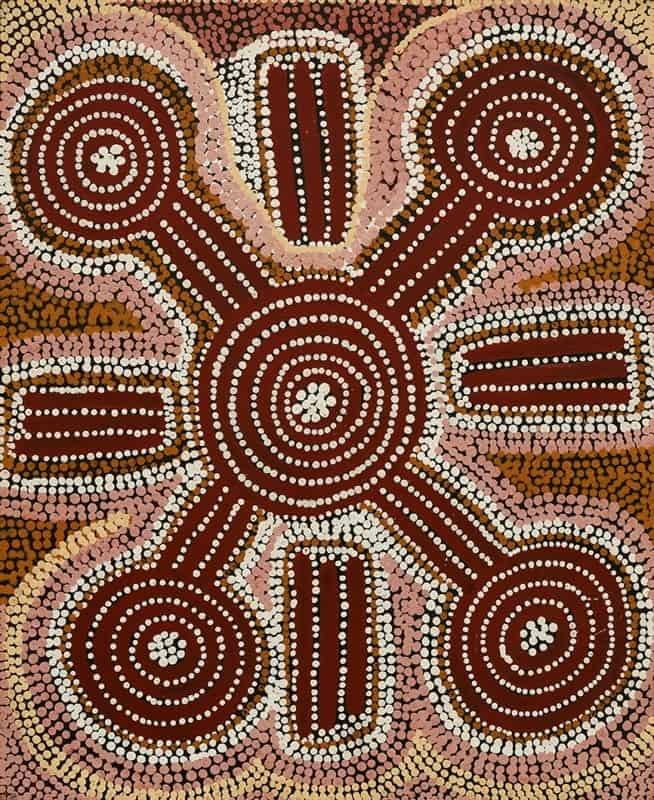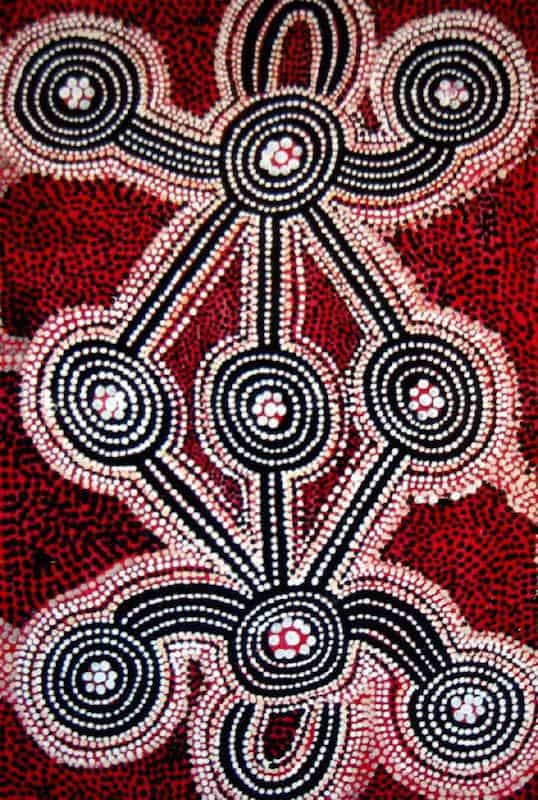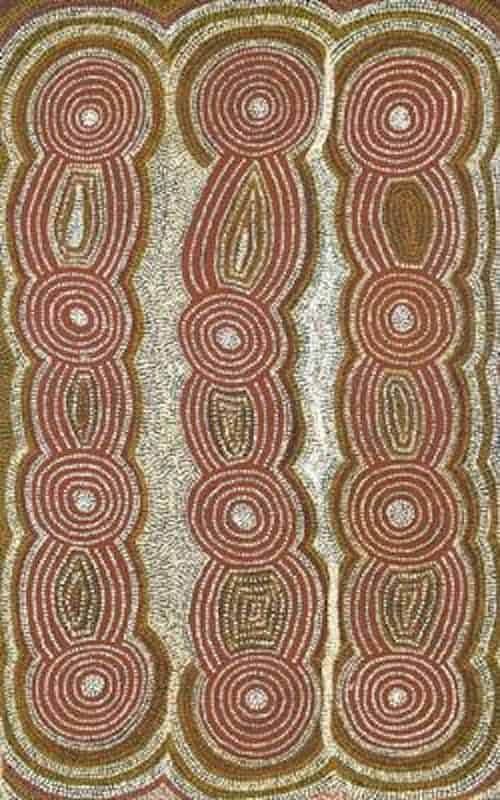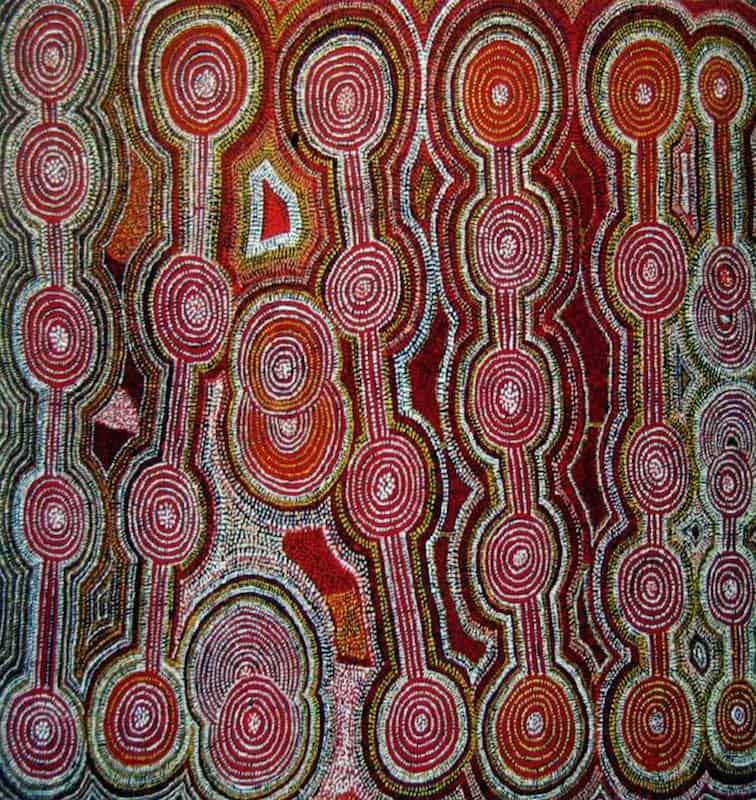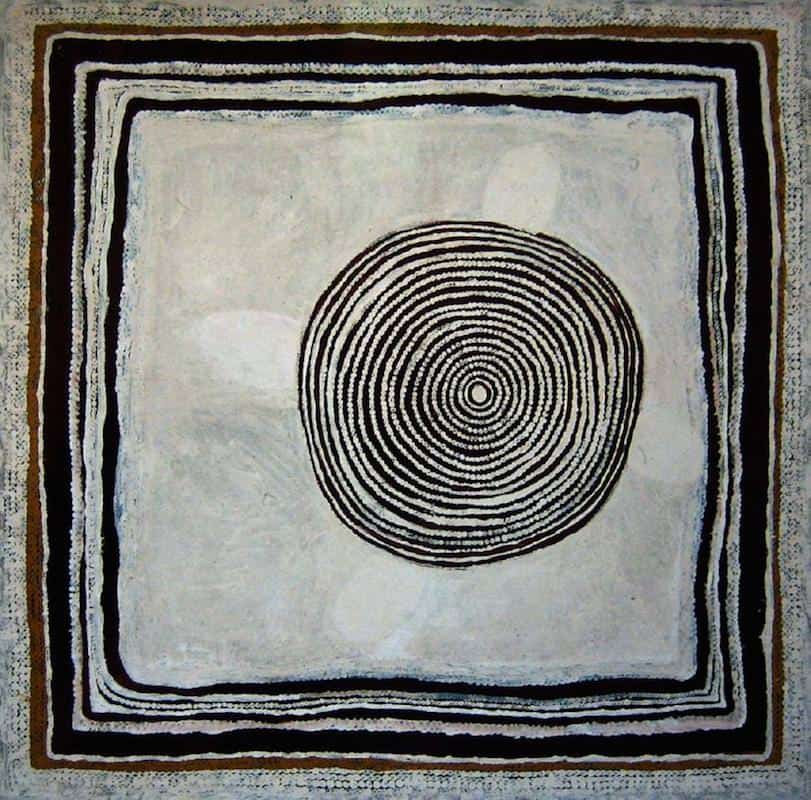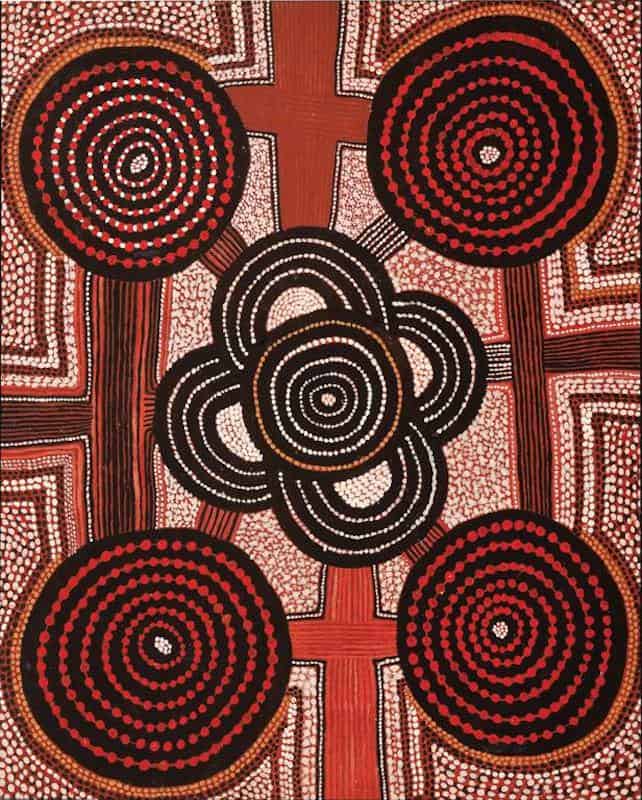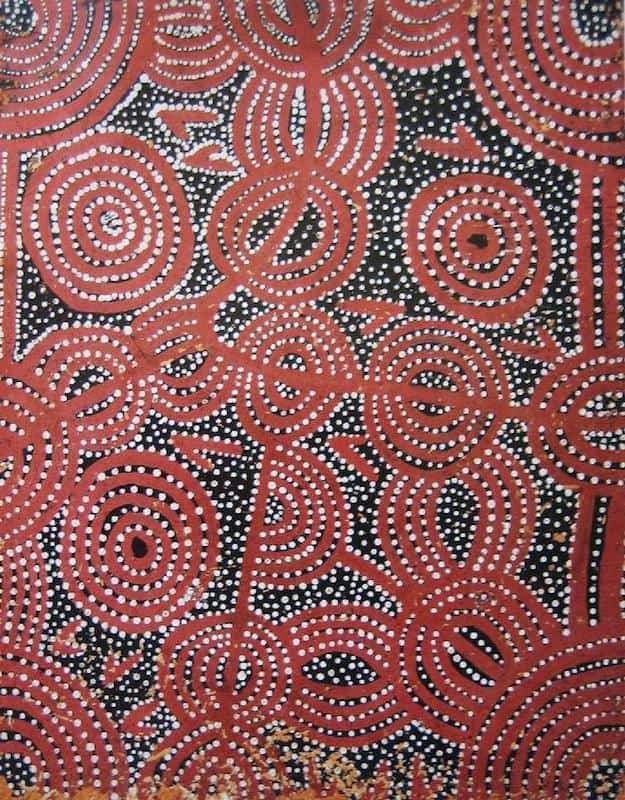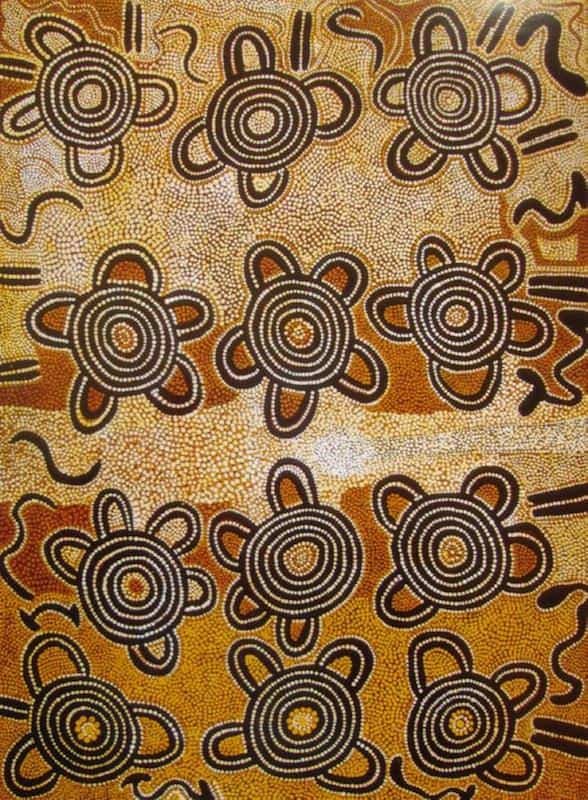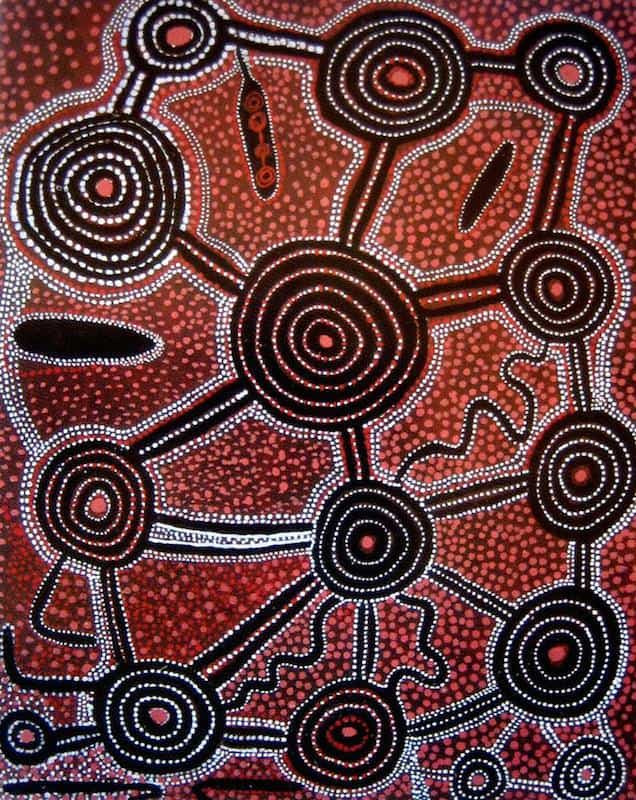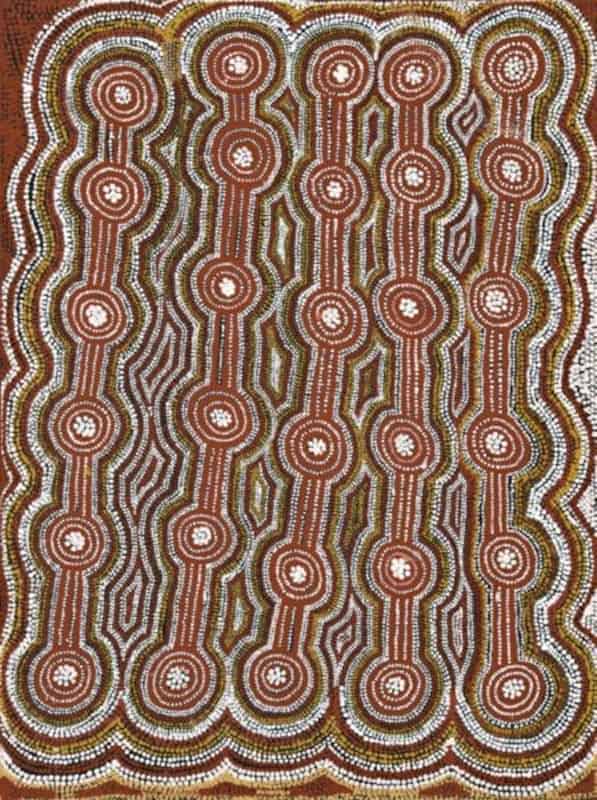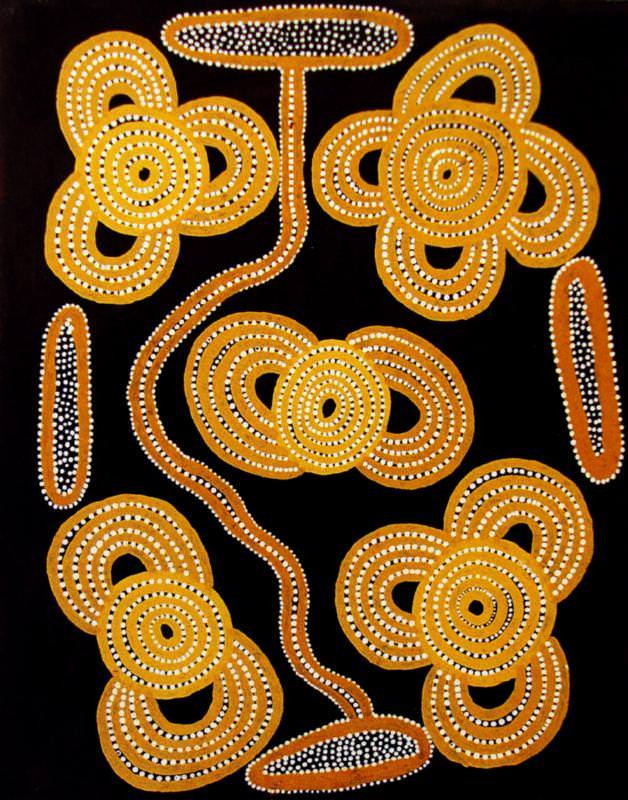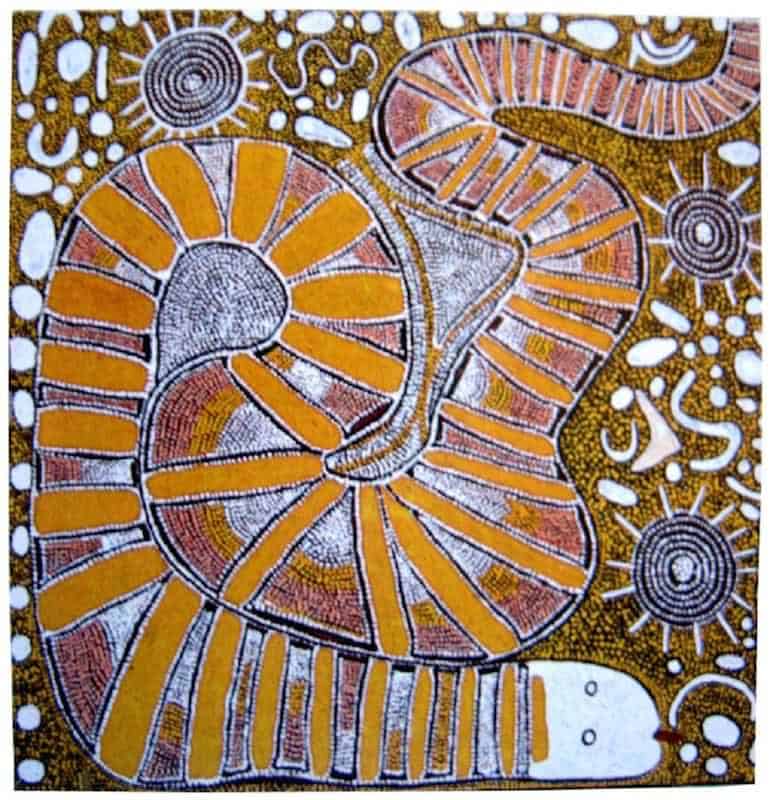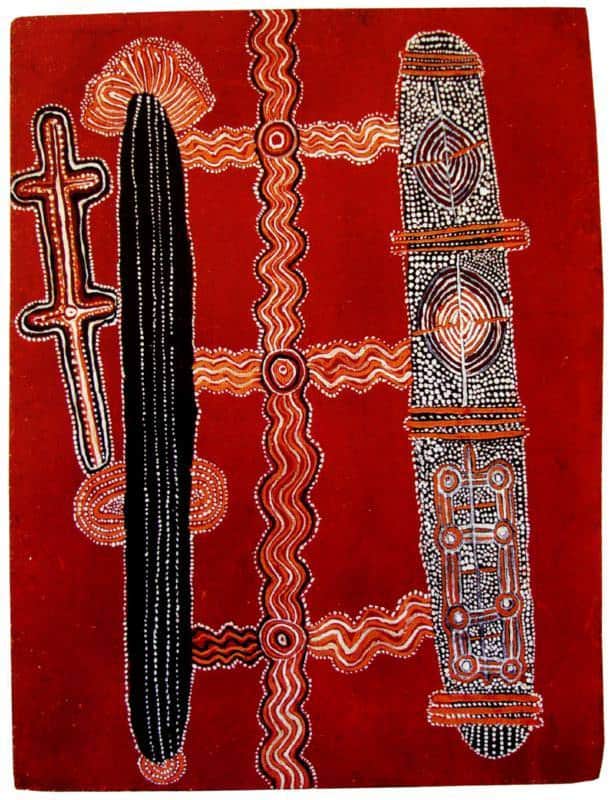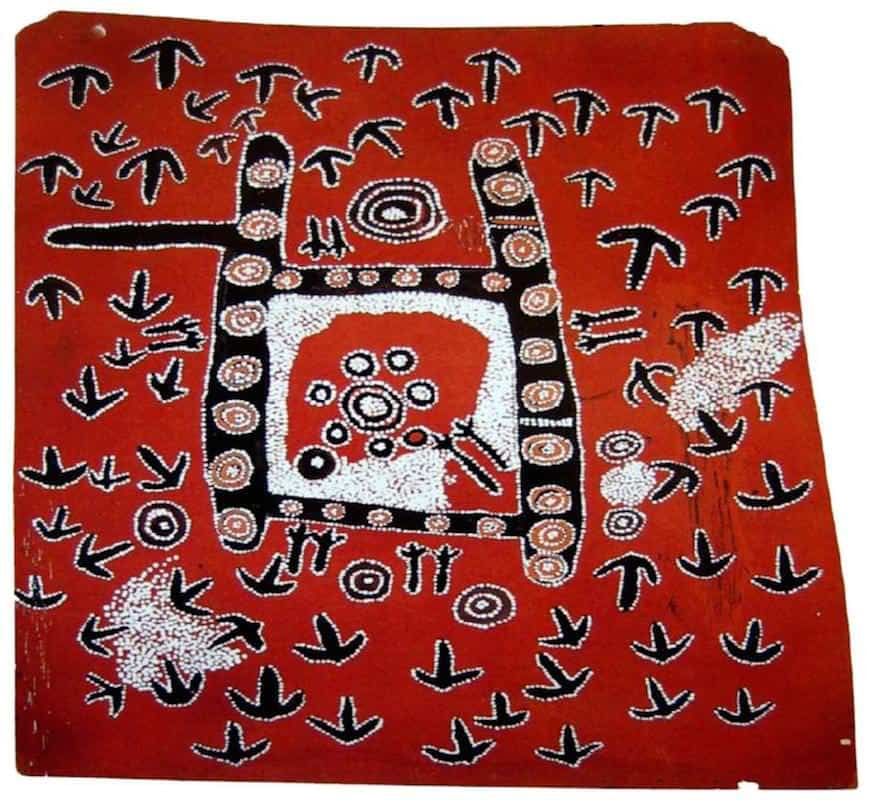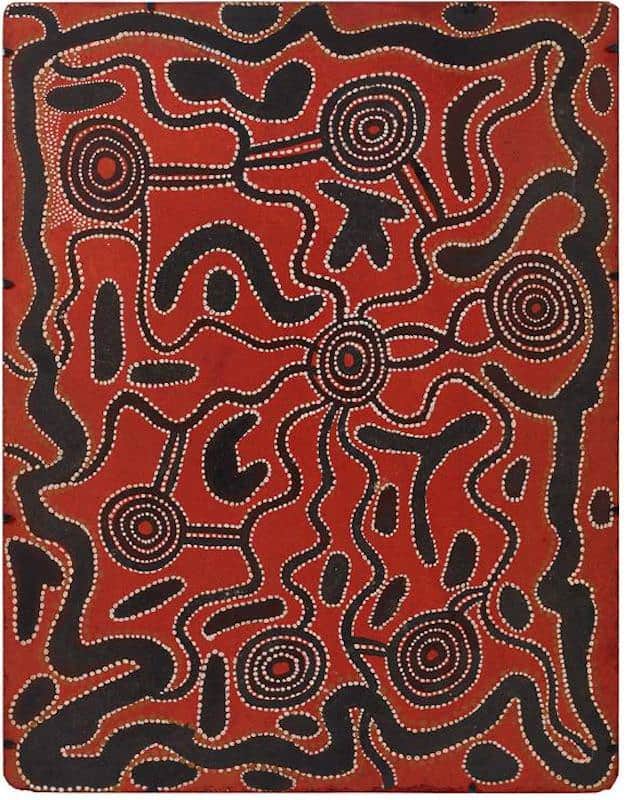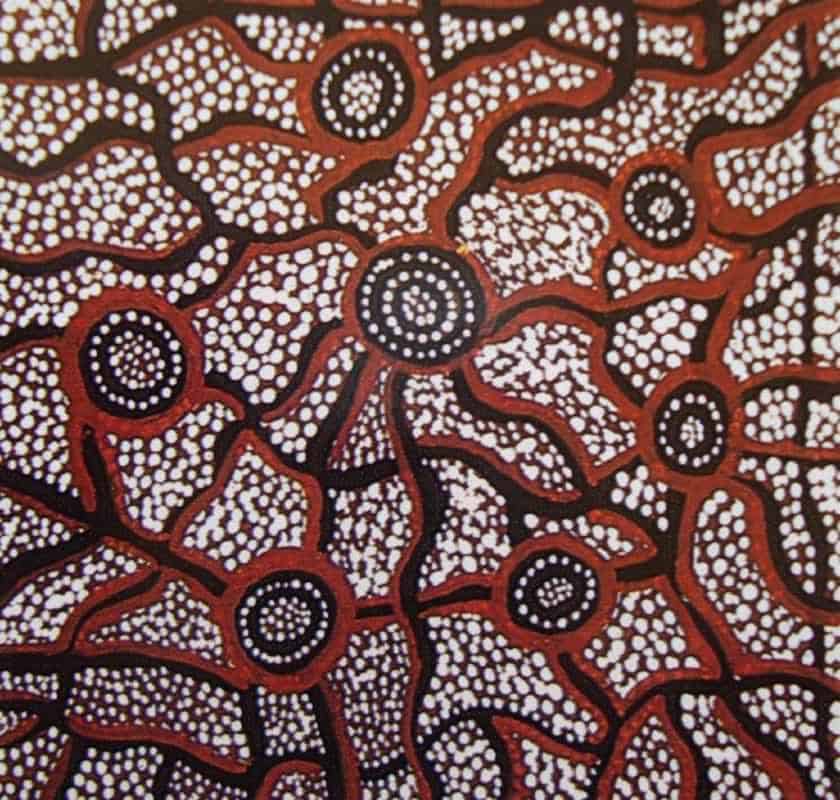Charlie Tawara Tjungurrayi
Charlie Tawara Tjungurrayi was one of the pioneering artists of the Western Desert Aboriginal art
He was a prolific and talented painter. His works were often structured and intense. The vitality of his brushwork gave his works a characteristic textured surface.
His paintings often have a vigorous presence and depict sacred subjects. In the early part of his career, Charlie Tawara Tjungurrayi painted on small bits of board. He went on to become one of the most vital figures of the aboriginal art movement. Many of his early works are ritual and contain secret imagery meant only for the eyes of initiated men. His later works are on Canvass and often maintain his earlier intensity of imagery.
The aim of this article is to assist readers in identifying if their Aboriginal painting is by Charlie Tawara Tjungurrayi. It compares examples of his work. It also gives some background to the life of this fascinating artist.
If you have a Charlie Tawara Tjungurrayi Aboriginal painting to sell please contact me. If you want to know what your Charlie Tawara Tjungurrayi painting is worth please feel free to send me a Jpeg. I would love to see it.
If you wish to research past sales of this artist please read: Charlie Tawara Tjungurrayi Artworks and Values
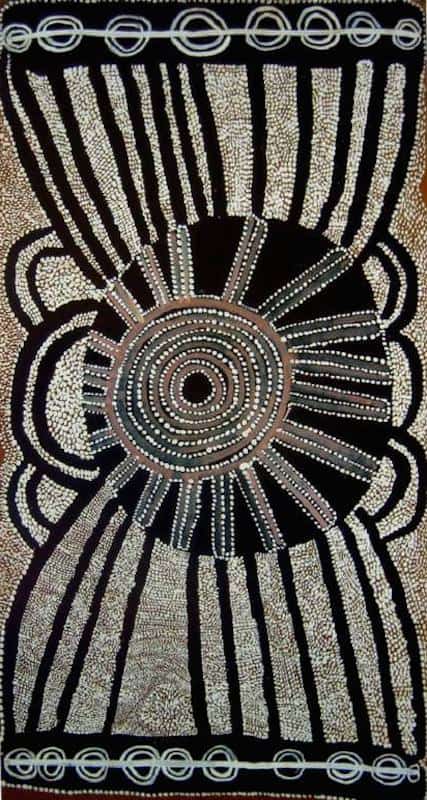
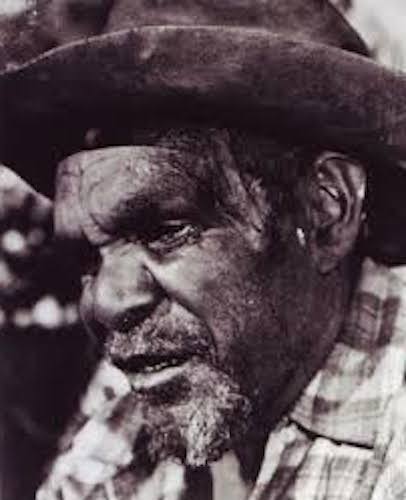
Charlie Tawara Tjungurrayi Early Life
Charlie Tawara Tjungurrayi was born west of the Kintore Ranges in Pintupi country. He first met Europeans as a youth and in his early teens lived at Haasts Bluff. By the Second World War, he had moved to Hermannsburg mission and learned a trade as a builder. His skills as a builder later took him to Adelaide where he helped build military camps.
In the 1950’s he moved with his family back to live at Haast’s Bluff. He often traveled out of Haasts Bluff into the desert to take rations to his tribal people. He helped, liaise for the welfare patrols who sought to draw the various tribes into government settlements.
In the 1960’s he moved to Papunya a government resettlement town.
Early painting
In 1971 Geoff Bardon became a local school teacher at Papunya primary. He tried to encourage local children to paint in their own traditional style. When he was told only older men could paint these stories he to start a mens painting group.
Charlie Tawara Tjungurrayi enthusiastically applied himself to the painting group. It was a way of reconnecting with his home country through art.
His art work was structured but occasionally gave way to a more experimental flair. The vitality of his brushwork gave his works a characteristic textured surface that emphasized his attachment to solidity of form.
His skill and determination imparted a ‘vigorous presence’ to his paintings.
Being a senior Pintupi tribesmen he and Uta Uta soon inspired other Pintupi tribesmen like Shorty Lungkarta and Yala Yala to join them. They would often sit under a tree with paintings balanced on their knees while chanting ancient songlines relating to their art.
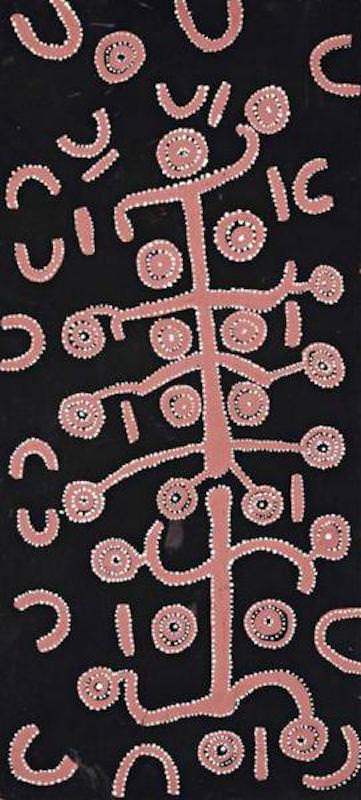
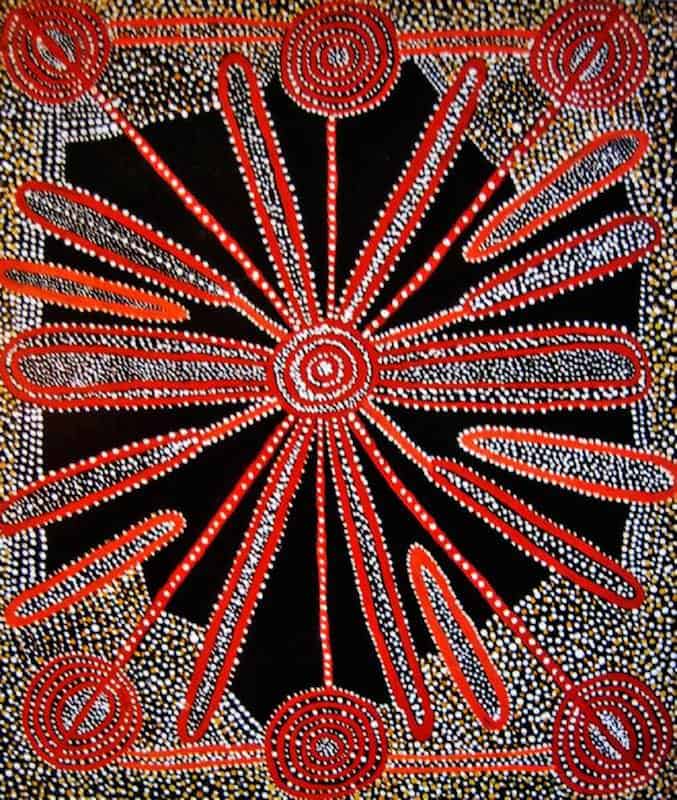
The natural Liason
His strong English and understanding of both cultures made Charlie Tawara Tjungurrayi a natural go-between for Bardon. He helped guide and explain, on both sides of the cultural divide. He was a key figure for the financial and cultural transactions that were the basis of a fledgling art business.
Charlie Tawara Tjungurrayi was also the eldest of the many Tjungurrayi skin painters. These painters included Shorty Lungkata and Yala Yala. As the elder, he had authority but also looked after their interests.
He was one of the founding members of Papunya Tula. Papunya Tula was an art dealership for aboriginal people, run by aboriginal people.
It was Charlie Tawara Tjungurrayi who suggested to Bardon in 1972 that the newly established company be called Papunya Tula. Papunya Tula literally meaning ‘a meeting place of brothers and cousins at the Honey Ant place’, the small hill that looked over the Papunya settlement.
Charlie Tarawa Tjungurrayi: A Foundational Figure in the Papunya Tula Art Movement
According to renowned educator and Author of “Papunya a place before the story” Geoffrey Bardon, Charlie Tarawa Tjungurrayi was a pivotal figure in the early days of the Western Desert Art Movement. Widely respected among the Aboriginal communities, Tjungurrayi was known for his dignified presence, physical vitality, and cultural authority.
He regularly visited Bardon’s classroom at the inception of the movement, making a lasting impression with his calm demeanour and powerful stature. While often perceived as humourless and deliberate in speech, his thoughtful communication style reflected the seriousness with which he carried his responsibilities. Tjungurrayi was a senior Pintupi man and custodian of significant Dreamings, including the Yam Dreaming, Snake Dreaming, and Water Dreaming—key spiritual narratives that would later become central themes in the Papunya Tula art movement.
Living at West Camp among the newly displaced Pintupi people, he played an essential role as a cultural intermediary. Fluent in Pintupi and with passable English, Tjungurrayi acted as a translator and go-between for Bardon and other Pintupi men, many of whom shared his skin group and ceremonial affiliations. His deep cultural knowledge and leadership made him a natural choice to propose the name Papunya Tula for the now-iconic men’s painting cooperative.
Distinctive in appearance, Tjungurrayi was known for his gravelly voice and signature hat, which he wore to conceal a severe burn scar on his scalp. He often went barefoot and moved with quiet purpose. Though he did not drive, he was eager to secure a truck for his community, showing his strong desire to support and uplift his people through practical means.
Tjungurrayi was the eldest among several talented skin brothers—Shorty Lungkata Tjungurrayi, Tjampaljarri Yala Yala Gibbs, and Willie Tjungurrayi—many of whom also contributed to the evolution of contemporary Aboriginal art. Described by Bardon as a worker, a dreamer, and a visionary, Charlie Tarawa Tjungurrayi brought a quiet immaculateness to everything he did.
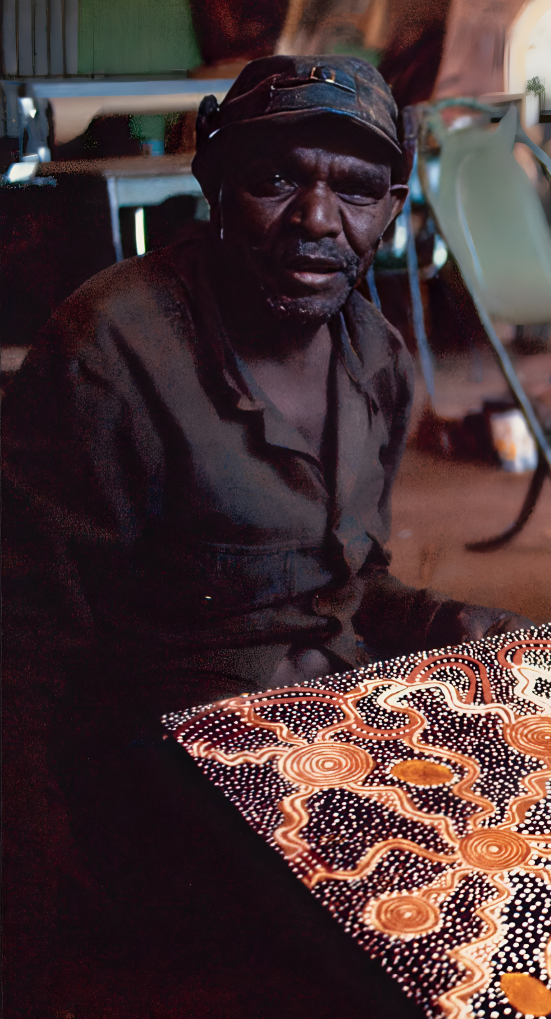
Photograph by Jensen, Michael
Later Period
When Andrew Crocker came to Papunya as the new art advisor in 1981, a strong friendship developed between the entrepreneurial English man and Charlie Tawara Tjungurrayi.
Crocker significantly raised the profile and sales of Papunya Tula. He used his contacts with wealthy people around Australia and overseas and sales skyrocketed.
Crocker brought Charlie Tawara into the limelight, as a leading artist. They traveled together to America and Europe. In England Charlie Tawara even met with Queen Elizabeth the second.
In 1987 he was afforded the first retrospective devoted to an Aboriginal artist
Charlie Tawara did eventually return to live in his Pintupi country, 25 years after he left it. Charlie Tawara lived an eventful and extraordinary life. Today his art resides in collections around the world.
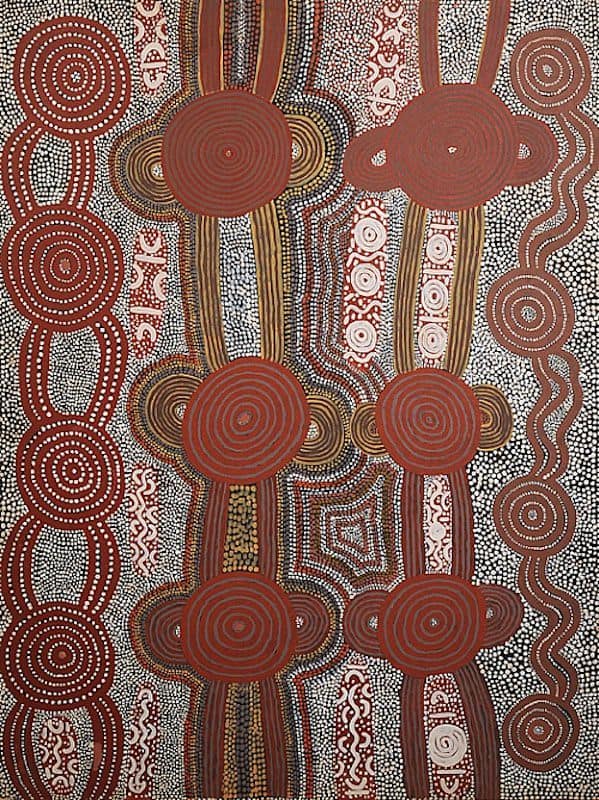

Charlie Tawara Tjungurrayi also painted some fast and lower quality art to sell to make money. These pieces lack the spirituality of his earlier works and have little value.
These works lack the intensity of his earlier works and are closer to abstract than traditional. Although they do maintain traditional elements they no longer tell the stories of his best works.
His skin name Tjungurrayi can also be spelled Djungurrayi or Jungurrayi and Charlie has sometimes been spelled Charley.
His tribal name Tawara is also recorded as Tjaruru, Tararu, Taruru, Tarawu Wadama or Tawarr
Charlie Tawara Tjungurrayi references
Papunya: A place made after the Story
Meaning of Charlie Tarawa Tjungurrayi Artworks
Moon Love Dreaming of Man & Woman
This painting is dominated by two bold icons. The ‘U’ shape signifies a figure in Western Desert iconography. The sign is derived from the mark made in the earth by a seated figure. This sign is sometimes gendered, as is the case here. With the addition of a single line from the centre of one of the ‘U’ shapes, Charlie indicates a man’s erect penis. The proximity to, and position of the female ‘U’ shape, shows they are a man and a woman having sex.
To some Europeans, Pintupi ontology can prove confronting. This cross-cultural embarrassment provides a source of great amusement for some Pintupi artists. Charlie and Uta Uta for instance enjoyed regaling visitors with the story of an old man, Yina. Yina had an illicit encounter with his mother-in-law at Umari. The bold iconography of Moon Love Dreaming of Man & Woman is, both an assertion of cultural difference, and an expression of shared humanity.
The distillation of narrative elements into clear-cut forms is typical of Charlie’s early paintings. He discovered his metier while displaying an idiosyncratic economy of style. The visceral materiality of this boldly drawn coupling is typical of Charlie Tarawa’s art. He imbues the copulating pair in Moon Love Dreaming of Man & Woman with autonomous life. This painting displays an audacity equal to the most brazen artworks by the European surrealists Joan Miro and Jean Arp.
Based on description John Kean
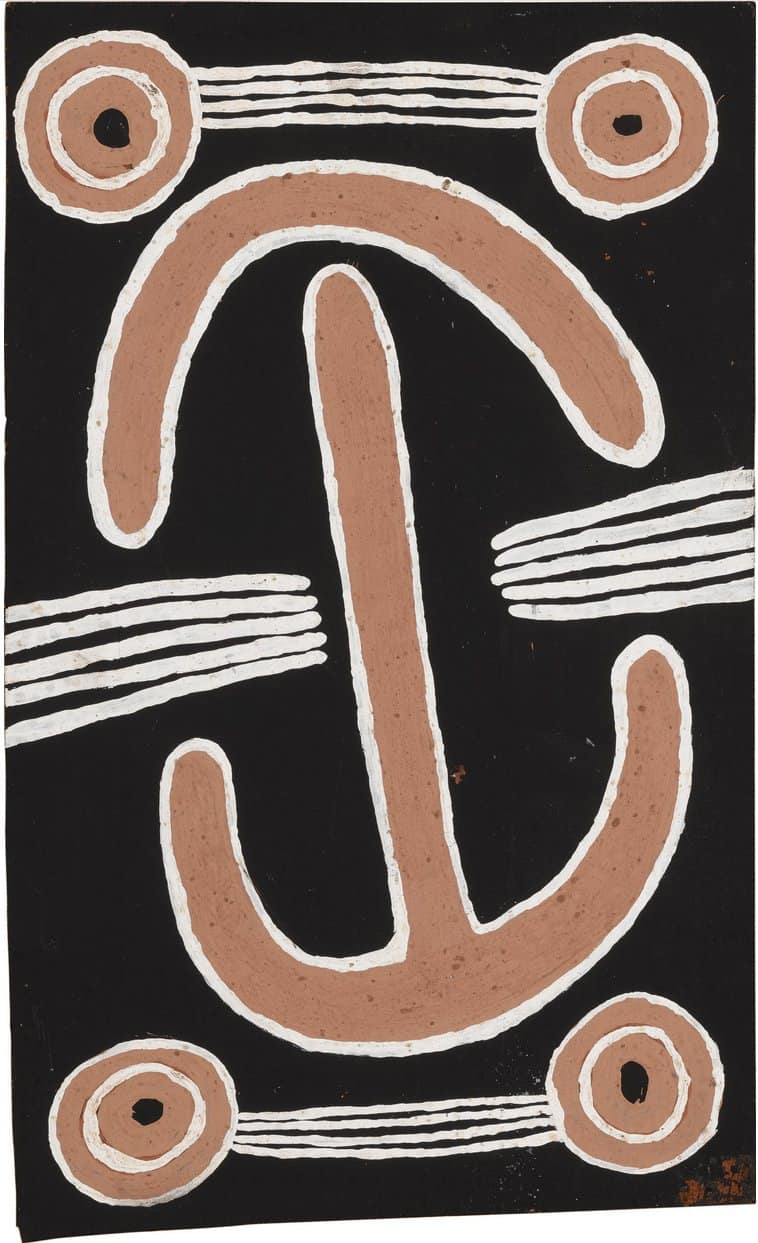
Moon Love Dreaming of Man & Woman
58 X 35 cm Painted 1971
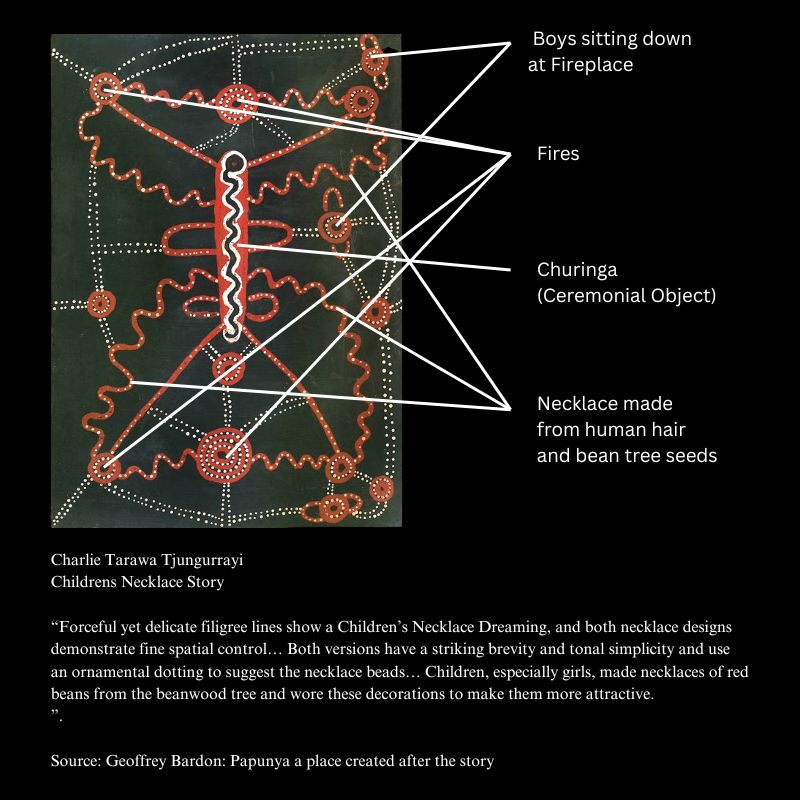
Mitukatjirri
The painting tells the story of Mitukatjirri … a sacred cave in which … ancestors carried out ceremonies … About a half mile from the cave is an array of unusual rocky outcrops. These rocky outcrops represented by the concentric circles. Thus the painting has a topographical quality. The story continues that during the ceremonies in which the men who should supposed to observe the rules of celibacy sneaked off and consorted with their women. The were at, and indeed, represented by the self same rocky outcrops. Thus a narrative quality occupies the painting … this is a cautionary tale draws attention to the do’s and don’ts of traditional law, while tempering the caution with a recognition of human weakness. A strong sexual element pervades this as many others of Charlies’s stories.
Based on description by Andrew Crocker
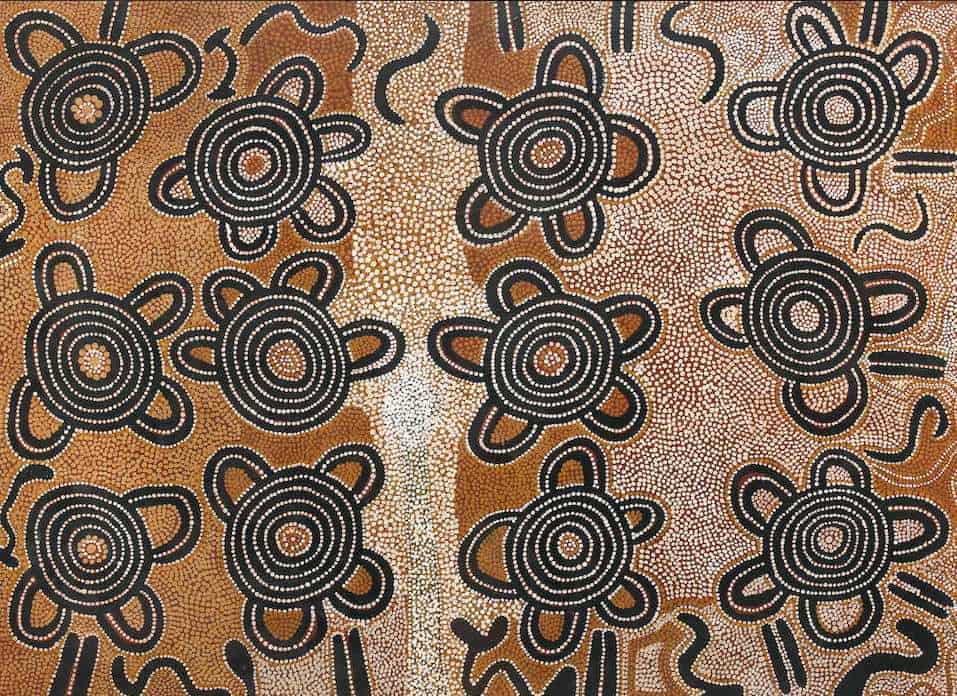
Mitukatjirri
Painted 1980 122. x 90 cm
Wild Potato Dreaming
Depicting the seeds, roots and fruit of the yam plant and surrounded by men in ceremonial dress. The men holding their spears and digging sticks. Wild Potato Story is a dedication to the yam plant, a vital food source. Yams emerges out of the arid terrain to nourish desert people and an important totem in traditional culture.
A fluid and dynamic painting, the work painted in the artist’s distinctive silhouette style. The sinuous and flowing yam plant painted in red ochre and outlined with white dotting. This technique allows the plant to seem to hover above the black ground.
Based on description by Crispin Gutteridge
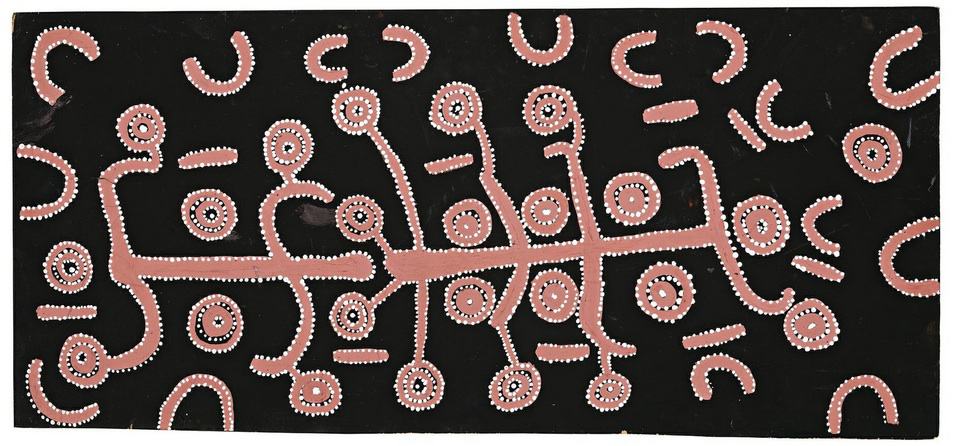
Wild Potato Dreaming
Painted 1971 88. x 41 cm
Early Papunya Artworks and Articles
All images in this article are for educational purposes only.
This site may contain copyrighted material the use of which was not specified by the copyright owner.
Charlie Tawara Tjungurrayi Images
The following images are not the complete known work by this artist but give a good idea of his style and range.
